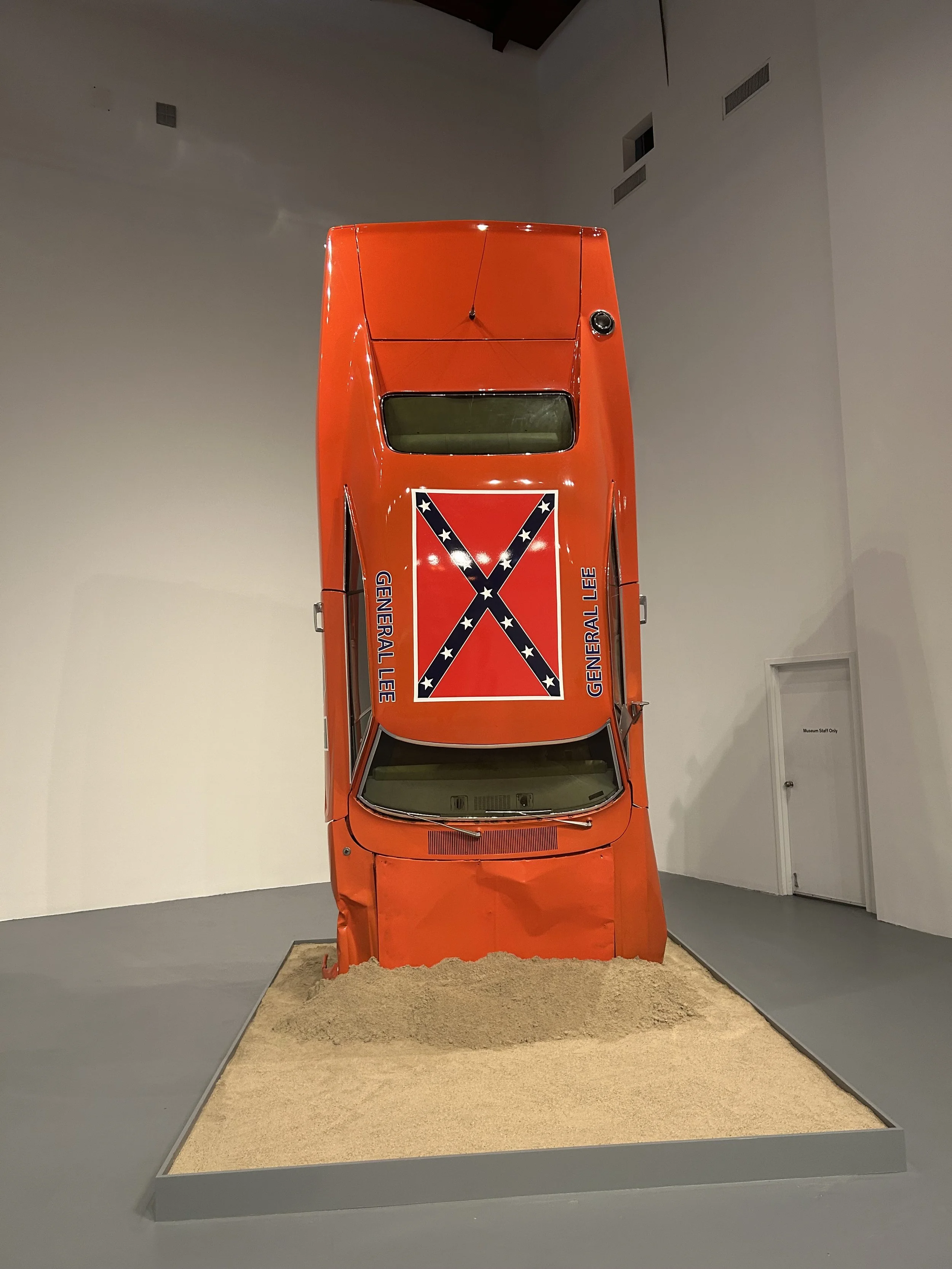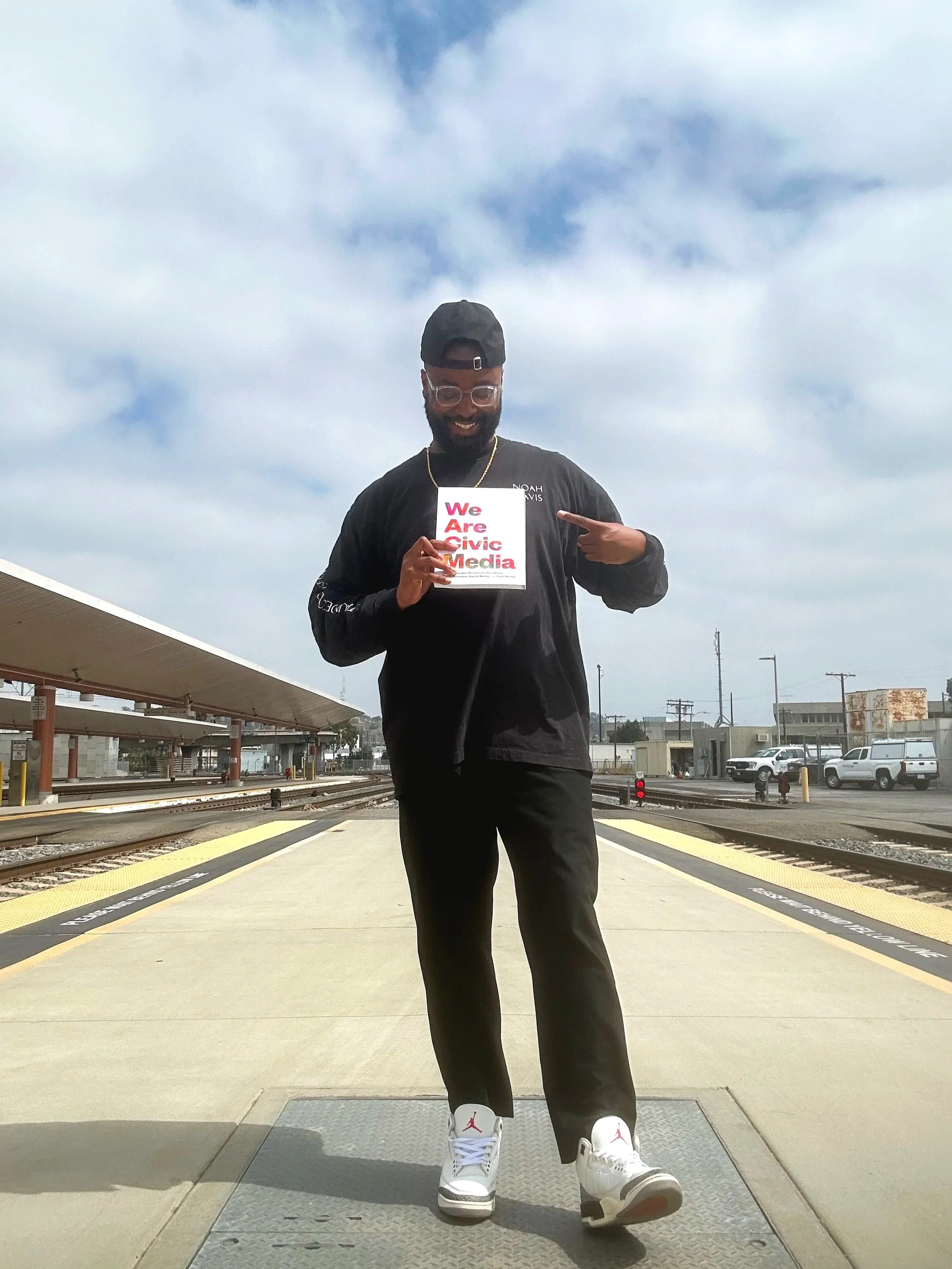The Battle for America’s Memory: Lessons from MOCA and The Brick’s “Monuments”
How NOMMO interprets the cultural civil war unfolding in America’s art spaces — and what these monuments reveal about who we remember and why.
“Unmanned Drone,” Kara Walker, The Brick, 2025
This Autumn, NOMMO attended Monuments, the Museum of Contemporary Art’s and The Bricks’ sweeping exhibition across Los Angeles, CA, that examined the Confederate mindset and its long shadow over the American imagination. Spanning the Geffen Contemporary and The Brick, the exhibition traced how the legacy of enslavement, Confederate mythology, and the “Lost Cause” narrative continue to shape the nation’s understanding of itself.
For NOMMO, Monuments was not only a study of history but a mirror for the present. The presentation revealed how symbols of the Confederacy, whether in bronze, marble, granite, cast zinc, film, or media, have long reinforced myths that normalize white supremacy under the banners of heritage and patriotism, many recently toppled by the civic protests from 2020.
At the Geffen, the scale and candor of the exhibition’s presentation were both staggering and sobering. Installations featuring retellings from D.W. Griffith’s The Birth of a Nation and portraits glorifying the Ku Klux Klan forced audiences to face the violence embedded in American cultural memory. For Black viewers, the experience could be deeply triggering. Yet, within that discomfort lies power: the power to name and dismantle the myths that have defined American life for centuries.

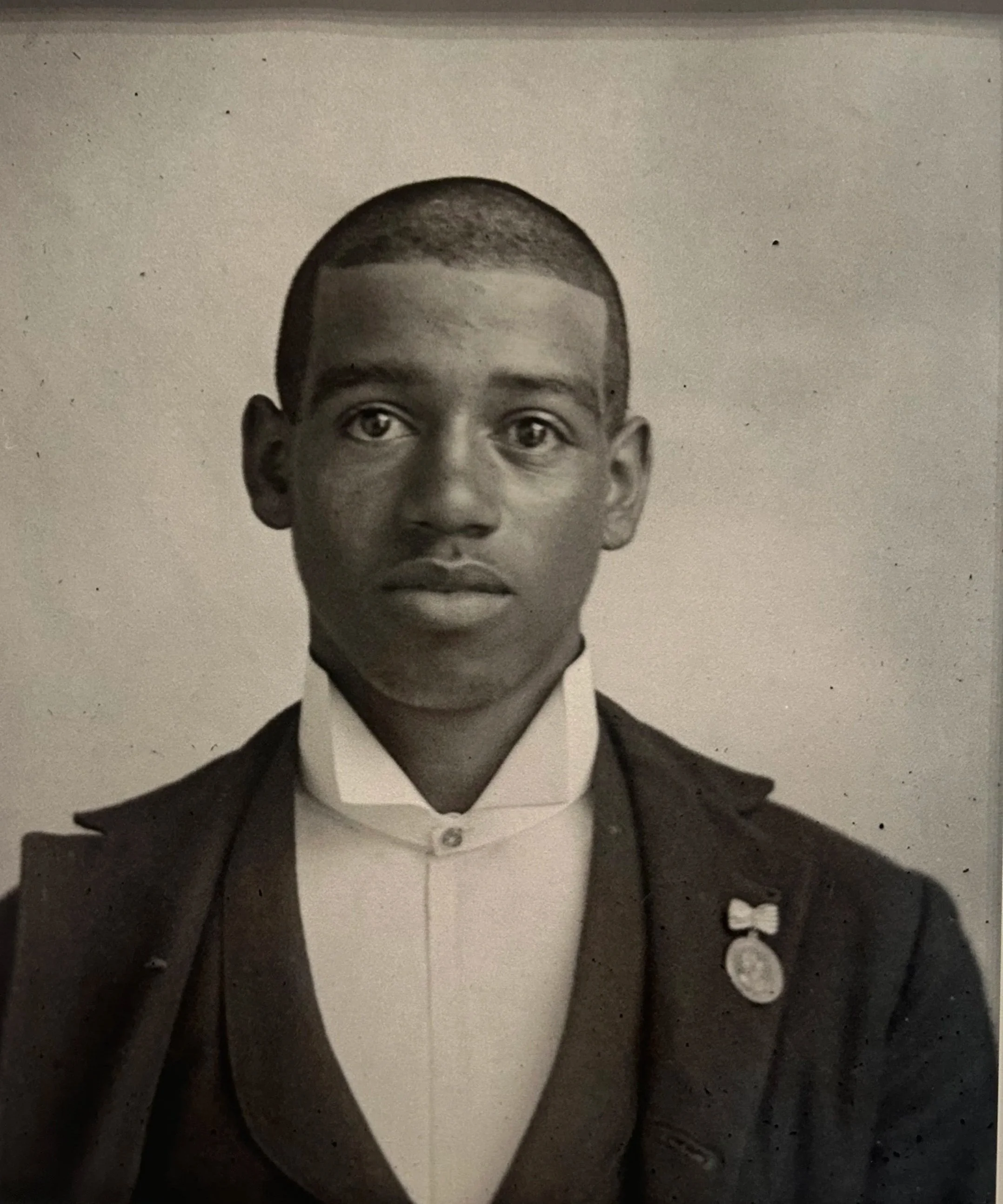




For Black audiences, Monuments invites both pain and affirmation. It acknowledges the distortion of our histories while highlighting how Black contemporary artists, such as Karon Davis, Hank Willis Thomas, and Kara Walker, among others, reclaim public space through reinterpretation and imagination. Kara Walker’s reinterpretation of a Confederate monument in "Unmanned Drone" at The Brick effectively transforms trauma into testimony. This work asserts that America's monumental landscape has long reflected its racial hierarchies. It highlights the importance of rewriting these disrupted truths and myths in a significant way to engage in a cultural contest against the narratives rooted in apartheid.




White audiences, too, appeared visibly unsettled and intrigued by the exhibition at both locations. Many encountered, perhaps for the first time, how little the Civil War and Reconstruction are taught in American schools. Studies show that fewer than 8 percent of U.S. high school seniors identify slavery as the central cause of the Civil War, and fewer than half study Reconstruction at all. This educational gap sustains a selective national memory, where Confederate heroes are still honored more often than those who fought for freedom and democracy in the Union, especially the formerly enslaved Africans. Reports from 2022 to 2025 indicate that over 2,000 public symbols of the Confederacy remain standing across the U.S., including monuments, markers, schools, parks, and street names.
Exhibitions like Monuments help fill that void. They position museums as sites of civic accountability rather than aesthetic distance. The inclusion of works such as Hank Willis Thomas’s "A Suspension of Hostilities," a homage to the Duke of Hazzard’s car, which critiques pop culture’s casual embrace of Confederate symbols, underscores how these myths seep into everyday American life, specifically, America’s living rooms.
A Suspension of Hostilities, 2019 by Hank Willis Thomas
As our founder, chief curator, and historian, Tyree Boyd-Pates, reflected while viewing the exhibition, we are living through what can only be described as a cultural civil war. Inspired by Ta-Nehisi Coates’s We Were Eight Years in Power and The Message, Tyree noted that this cultural conflict is fought not through cannons or muskets, but through media, monuments, censored books, and the meaning itself. Each cultural battlefield, whether in galleries, classrooms, or public debates, mirrors past skirmishes and foreshadows future ones. The stakes are no longer just historical; they are existential, and that battleground is unfolding as we speak.
For NOMMO, Monuments affirms why cultural strategy matters. It demonstrates that the contest over national identity is not abstract; it is visual, emotional, and ongoing. The myths of the Confederacy have not disappeared; they have evolved into new forms. To confront them requires more than artistic interpretation. It demands collective reeducation and a willingness to build new monuments that honor truth, resilience, and the unfinished project of American freedom.
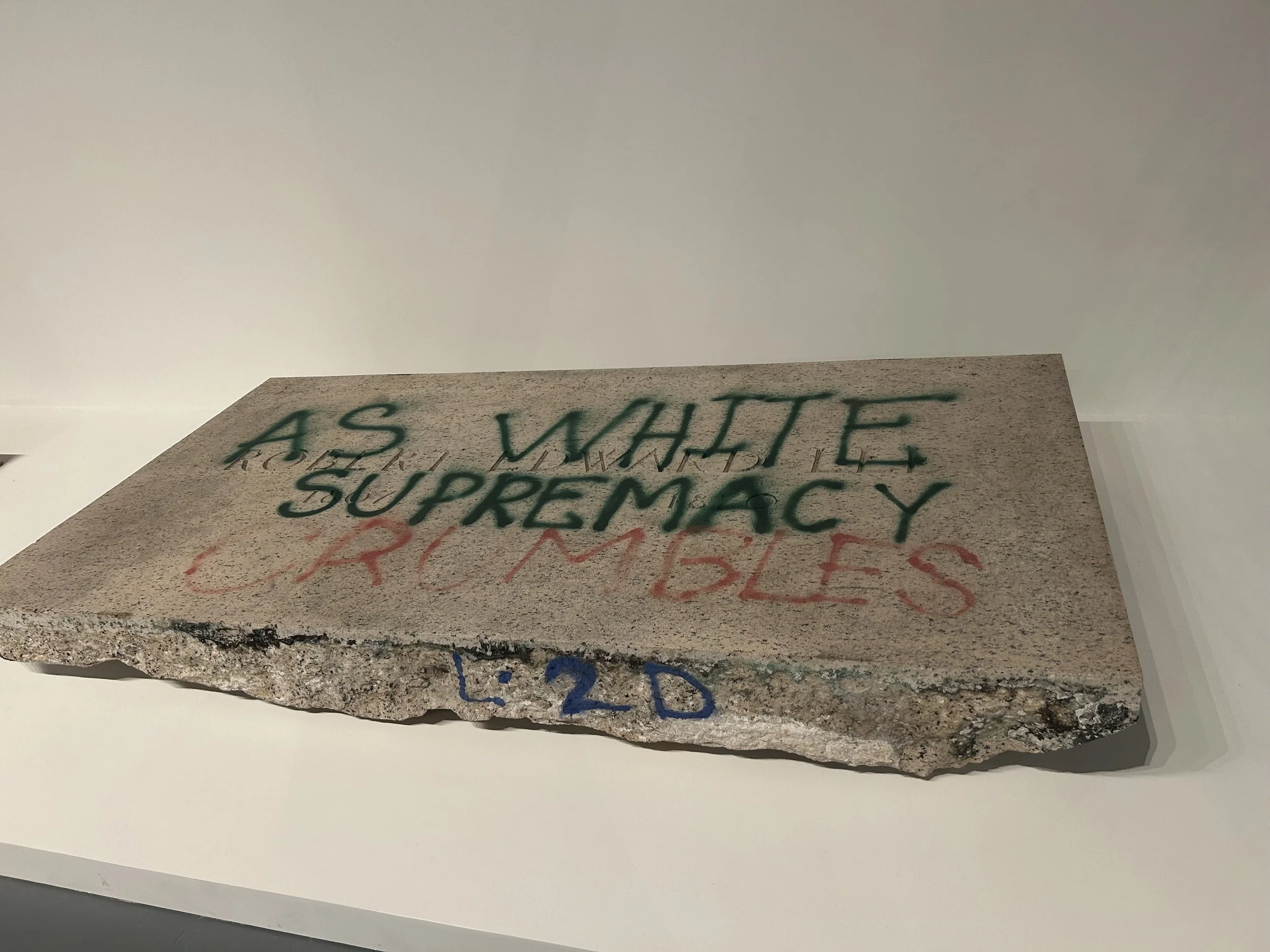
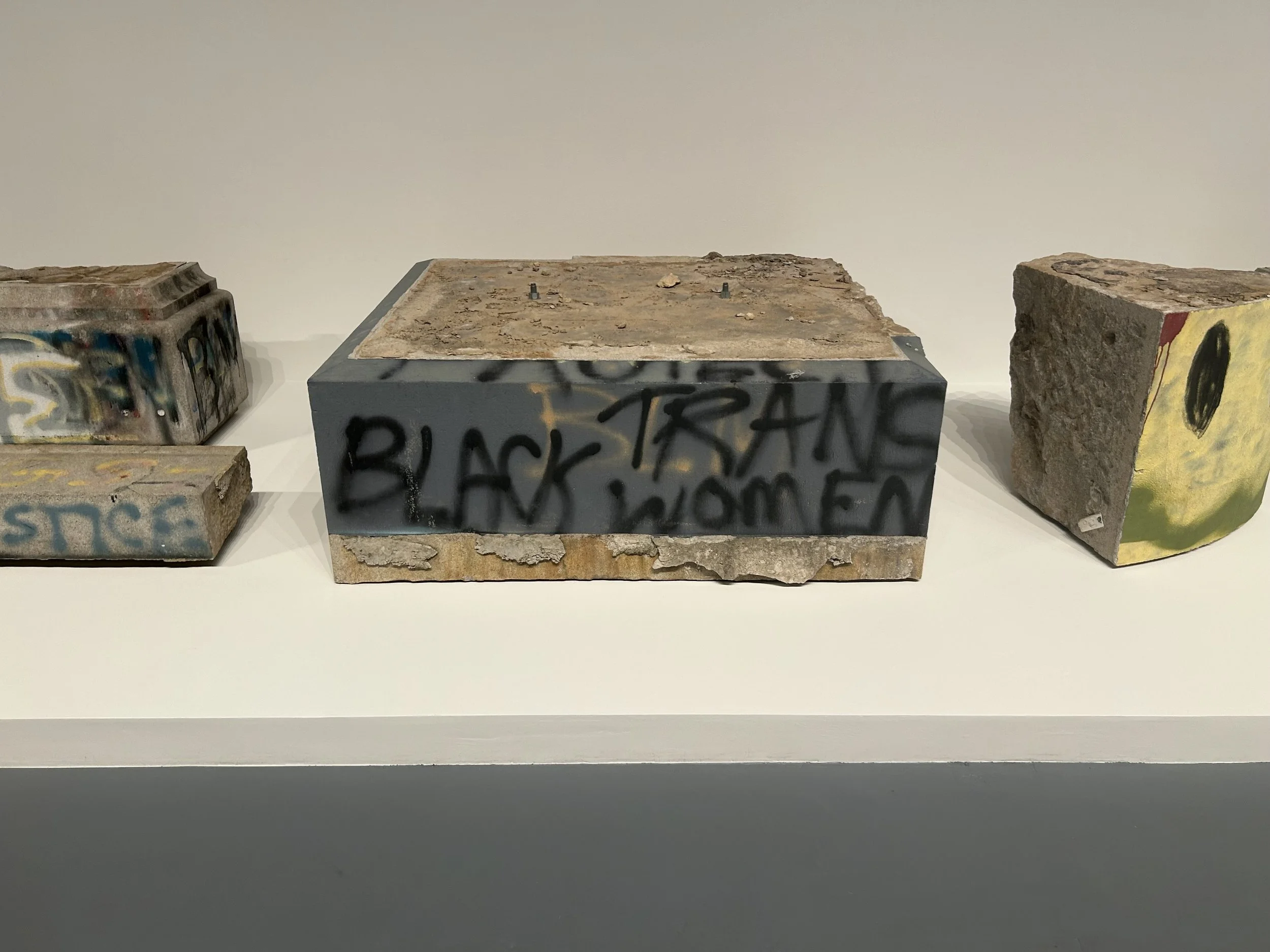
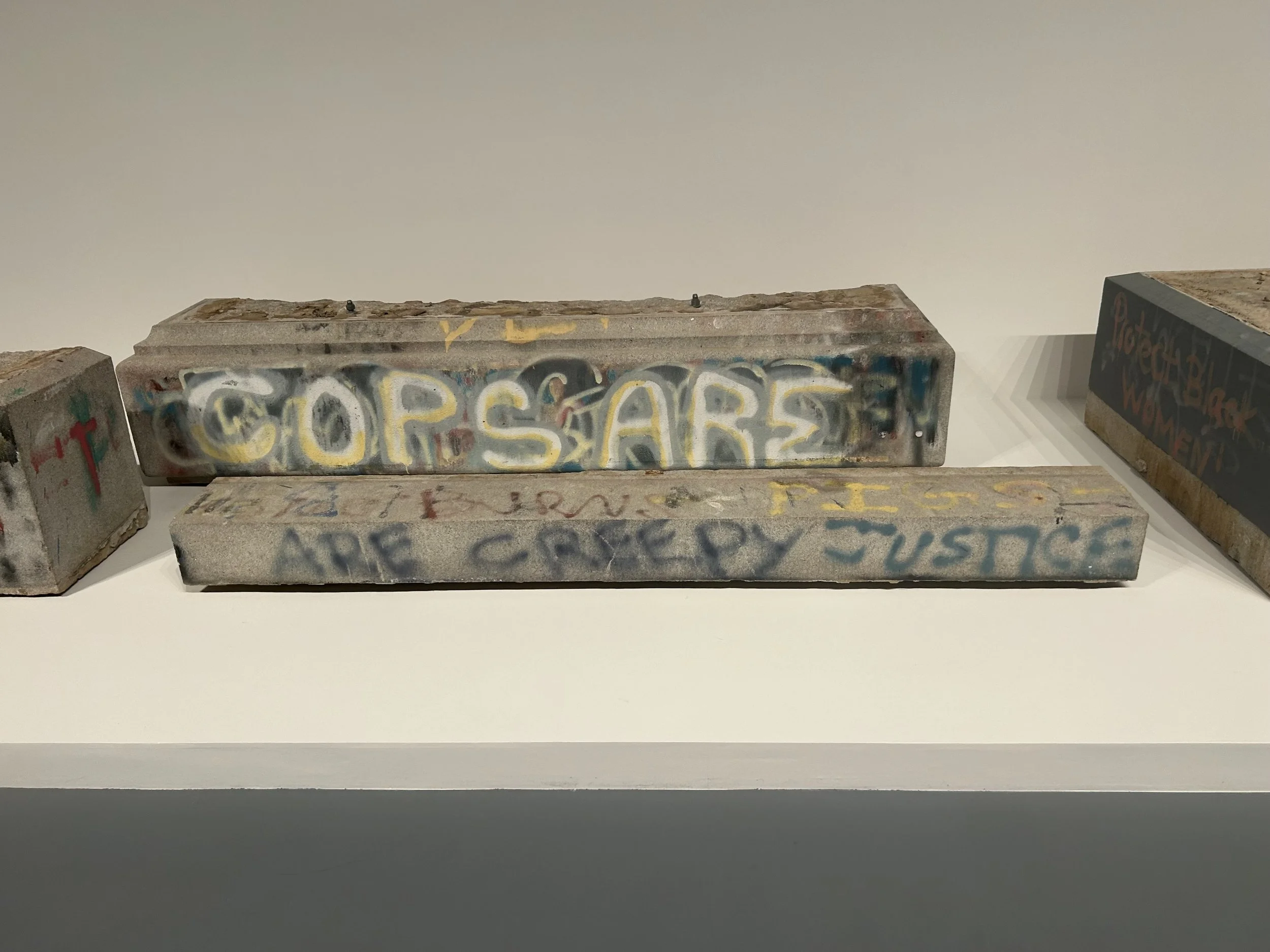
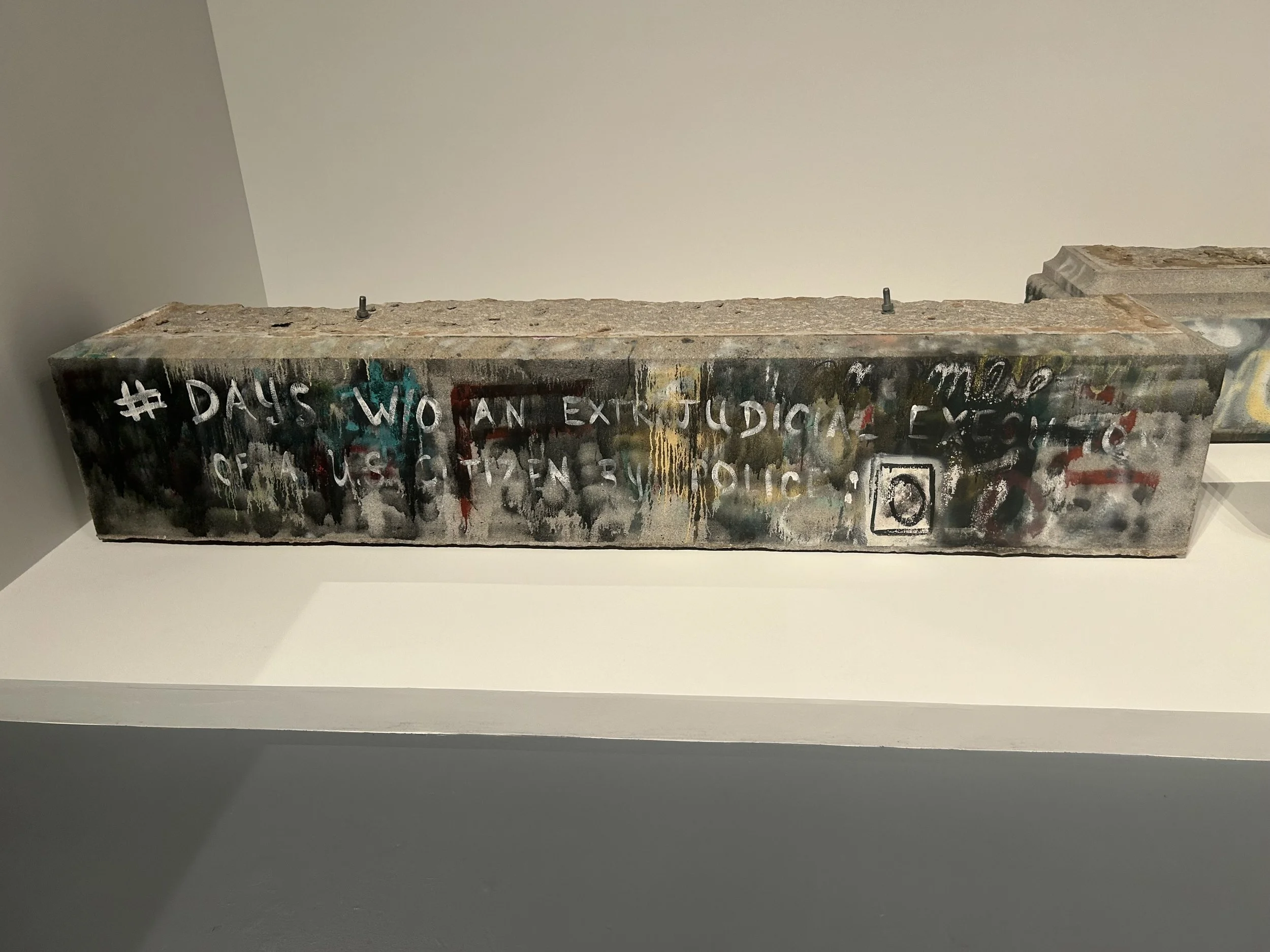


As Los Angeles continues its own reckoning with race and remembrance in preparation for the 34th anniversary of the LA Uprising in 2026, Monuments offers a blueprint for how museums and cultural institutions can become active agents in shaping public memory. It challenges us to ask three key questions: What monuments still exist within our periphery, and which deserve to be toppled or reimagined? How can we ensure that the next generation inherits symbols of liberation rather than domination?
In this moment of cultural fracture and the reinstallation of toppled Confederate monuments by our federal administration, MOCA and The Brick’s Monuments remind us that the stories we preserve determine the futures we imagine. The war for America’s memory is not behind us; it is happening right now, in the galleries, classrooms, and creative spaces where truth and myth still collide.
Stonewall Jackson and Robert E. Lee Monument
Stonewall Jackson and Robert E. Lee Monument
NOMMO’s Tyree Boyd-Pates on Civic Media, Black History, Museums, and Communicating Afrofuturist Imaginings.
Today marks an exciting milestone for NOMMO Cultural Strategies: our founder, Tyree Boyd-Pates, is a featured contributor in We Are Civic Media: The Book, published by Northwestern University Press.
This groundbreaking volume serves as a collective manifesto for the field of civic media, one that refuses to separate the deeply personal from the political, the individual from the structural. Through twenty-three essays, reflections, and lived experiences, the book honors the practitioners, educators, cultural leaders, and community members who are shaping civic media as both a practice and a philosophy.
Tyree’s contribution reflects his lifelong commitment to uplifting Black narratives through an African-centered lens. As a multidisciplinary historian and cultural archaeologist, Tyree’s work interrogates how archives, museums, and public history can be reimagined as platforms for liberation spaces where the histories of the African Diaspora are not only preserved but celebrated. His chapter in We Are Civic Media explores how cultural strategy, curatorial practice, and storytelling can serve as civic infrastructure, empowering communities to see themselves as both the narrators and architects of their futures.
“Civic media is not just about content, it’s about context, connection, and community. It’s about making history a living, breathing force for liberation,” Tyree reflects.
From his early engagement with the African Diaspora in South Africa to his curatorial leadership in major museums, Tyree has consistently pushed for institutions to center the lived realities of marginalized people. His founding of NOMMO Cultural Strategies and Freedom School Online further extends this mission, bridging art, education, and activism to create cultural narratives that resonate globally.
We’re thrilled to see Tyree’s voice alongside other visionary thinkers in this important work. We Are Civic Media is more than a book, it’s an invitation to enter the world of civic media, discover its many pathways, and connect with the people shaping it.
Get your copy: Visit We Are Civic Media and use discount code CIVICMEDIA for 25% off at the Northwestern University Press website.




